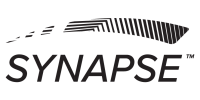Scan views are the graphs represented by the data collected during a scan. The neuroCORE data is presented in 5 variations and highlights the deviations from a normal, well adjusted patient database. The comparisons are based on amplitude and symmetry of EMG signals.
Pattern Graph (Fig. 1):
The Pattern Graph plots the activity of neuromuscular (NM) motor signals on either side of the spine from S1 to C1. It is an ideal representation of the efficiency of the distribution of the signals when measuring energy expenditure in a seated posture.
Postural Tone Graph (Bar Graph: Amplitude) (Fig. 2):
This graph plots the amplitude of the neuromuscular (NM) motor nerve signals on both sides of the spine at each scanned level. The normal range of acceptable activity as measured in a well-adjusted cohort and published forms the basis of comparison at each spinal level.
Postural Balance Graph (Symmetry) – (Fig. 3):
This graph plots the asymmetry of the neuromuscular (NM) motor nerve signals on both sides of the spine, at each scanned level.
neuroLINK (Fig. 4):
neuroLINK is a patient education tool embedded in the Synapse software, generated from the Postural Tone and Postural Balance scan views. At the completion of a neuroCORE scan, the various scan views are generated. The examiner can swipe left on the iPad screen to review these presentations. Included in these views is the neuroLINK.
Data Table:
A Data Table is provided to allow the clinician to review the actual amplitude of the NM signal at each spinal level. This is published in microvolts (uV).







